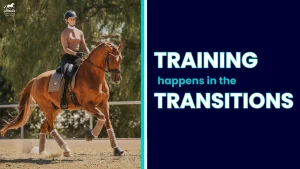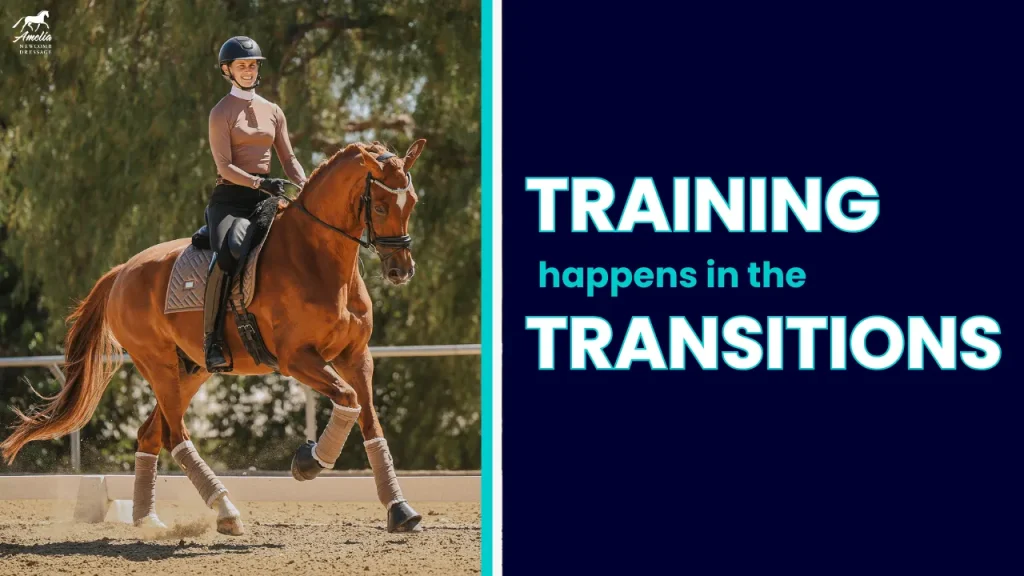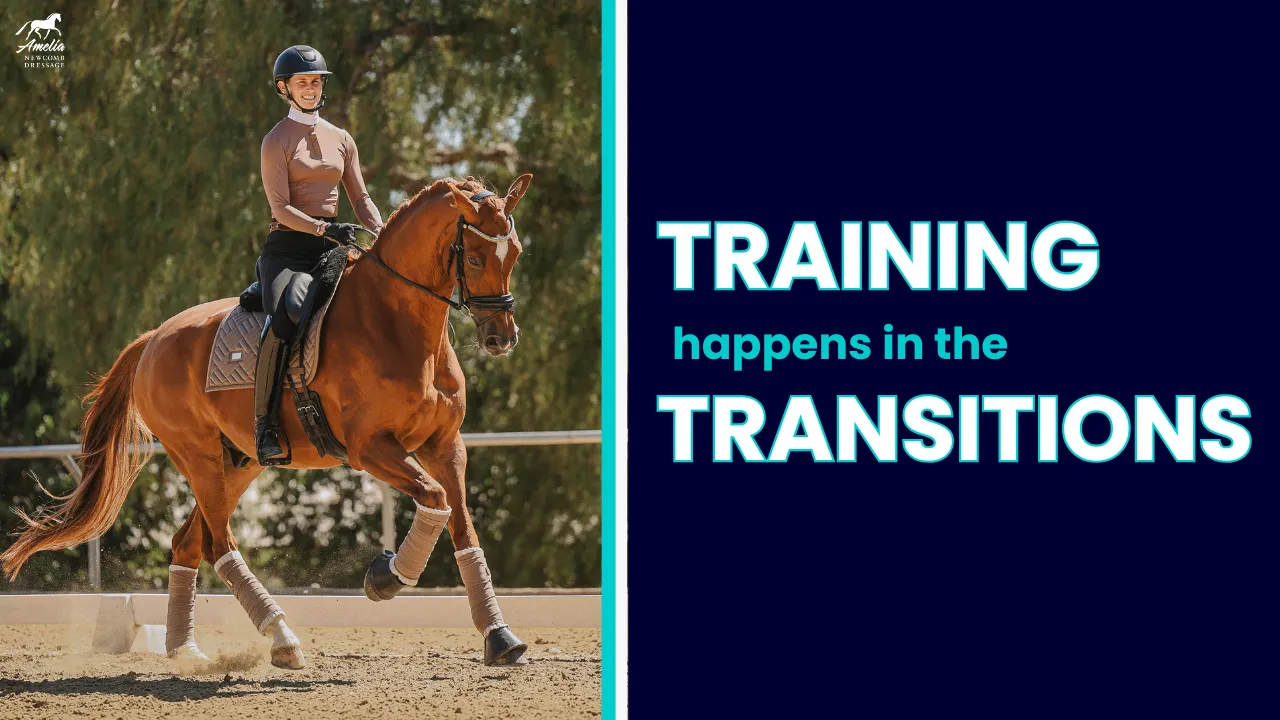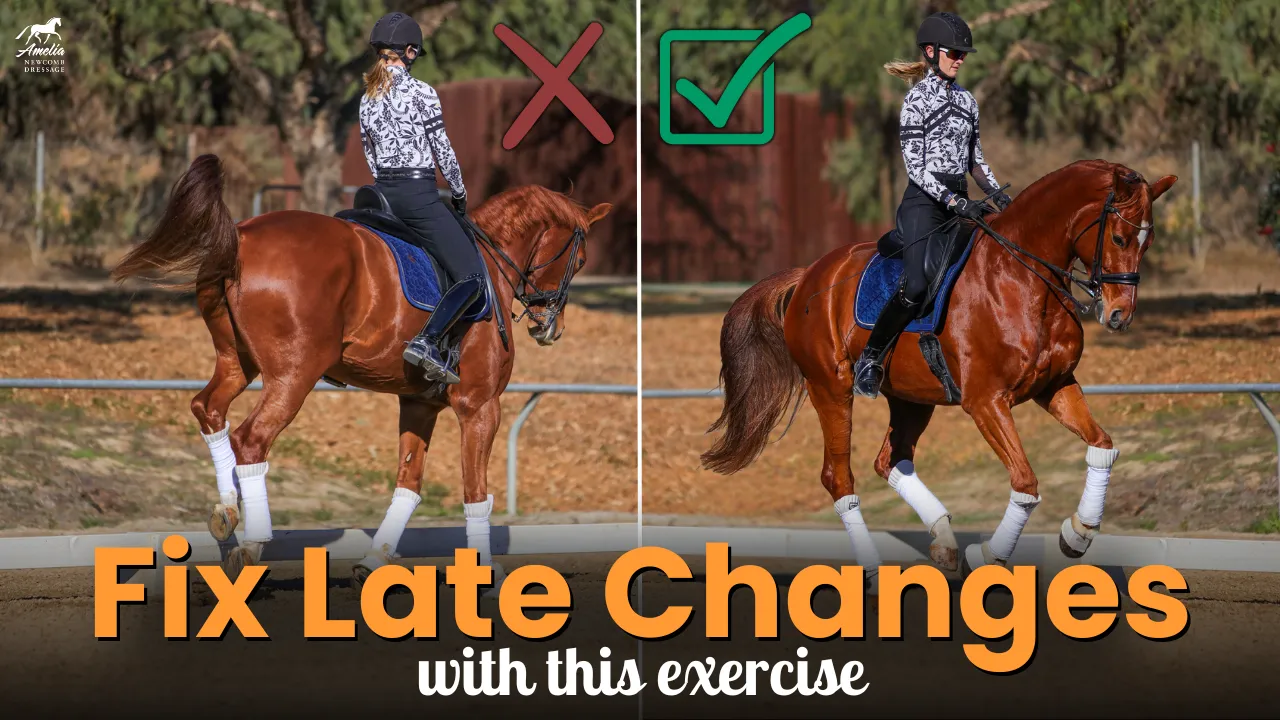How should you plan your ride? Which exercises should you do with your horse and in what order? So many riders struggle with this, and students are always asking me to help them plan their rides. The tricky part is that each horse and rider combination needs a different “recipe” for a productive ride. So I thought it would be helpful to share lessons from three riders of different levels, breaking down the exercises and key takeaways from each session.
Structuring your ride helps keep you and your horse on track. From warm-up to working phase to cool-down, each part builds on the last. This video shows real lessons that apply these principles in action—and offers exercises that can inspire your own rides.
Before we get into the video, I wanted to remind you that my Free Five-Day Riding Bootcamp is happening this week! In fact, today is the first official day, and we are talking about the top five training principles you should use in every ride. In the coming days, we will also be learning about improving your independent seat, your horse’s conformation, creating a unique training plan for you and your horse, and so much more. Don’t miss out! Join Bootcamp here.
Ok! Now on to the video and what I worked on with each horse and rider pair during their lesson:
Novice Rider: Ginny
Ginny rode her hot chestnut mare, focusing first on rhythm, tempo, and rider position. We started on a 20-meter circle to establish a consistent, steady trot. From there, we moved to the “ice cream cone” pattern—a fantastic exercise for improving suppleness, bend, and connection. Throughout, I reminded Ginny to keep her shoulders back and heels down, helping her maintain good posture and effective aids.
Intermediate Rider: Shelbi
Shelbi’s warm-up included the ribbon candy serpentine and lots of stretching. Later, we worked on canter-walk transitions—an excellent exercise to develop collection and engagement in the canter. I reminded Shelbi that “collection isn’t slow; it’s activity,” helping her keep her horse quick and engaged. We focused on using the outside aids to control the shoulders, with a little counter bend to refine the horse’s balance.
Advanced Rider: Rachel
Rachel is working on the Intermediare 1 test with her talented FEI horse. We worked on improving the tempi changes by focusing on energy and responsiveness. We emphasized teaching the horse to respond to the canter aid straight away, as a slow reaction to the walk-canter aid often means slow changes. We practiced simple changes on the diagonal, reinforcing the importance of the first stride of the canter. I also reminded her that after each flying change, she needed to re-energize the canter to maintain quality and engagement.
Watching these riders at different levels highlights how training truly builds upon itself. No matter where you are in your journey, understanding how to structure your ride and choose the right exercises is key to progress.
Happy Riding!
Amelia
P.S. Want help planning your ride? Don’t forget to join my Free Five-Day Riding Bootcamp! Today was the first official day, but there’s still time for you to join in on the learning and fun! Join Bootcamp here.












































